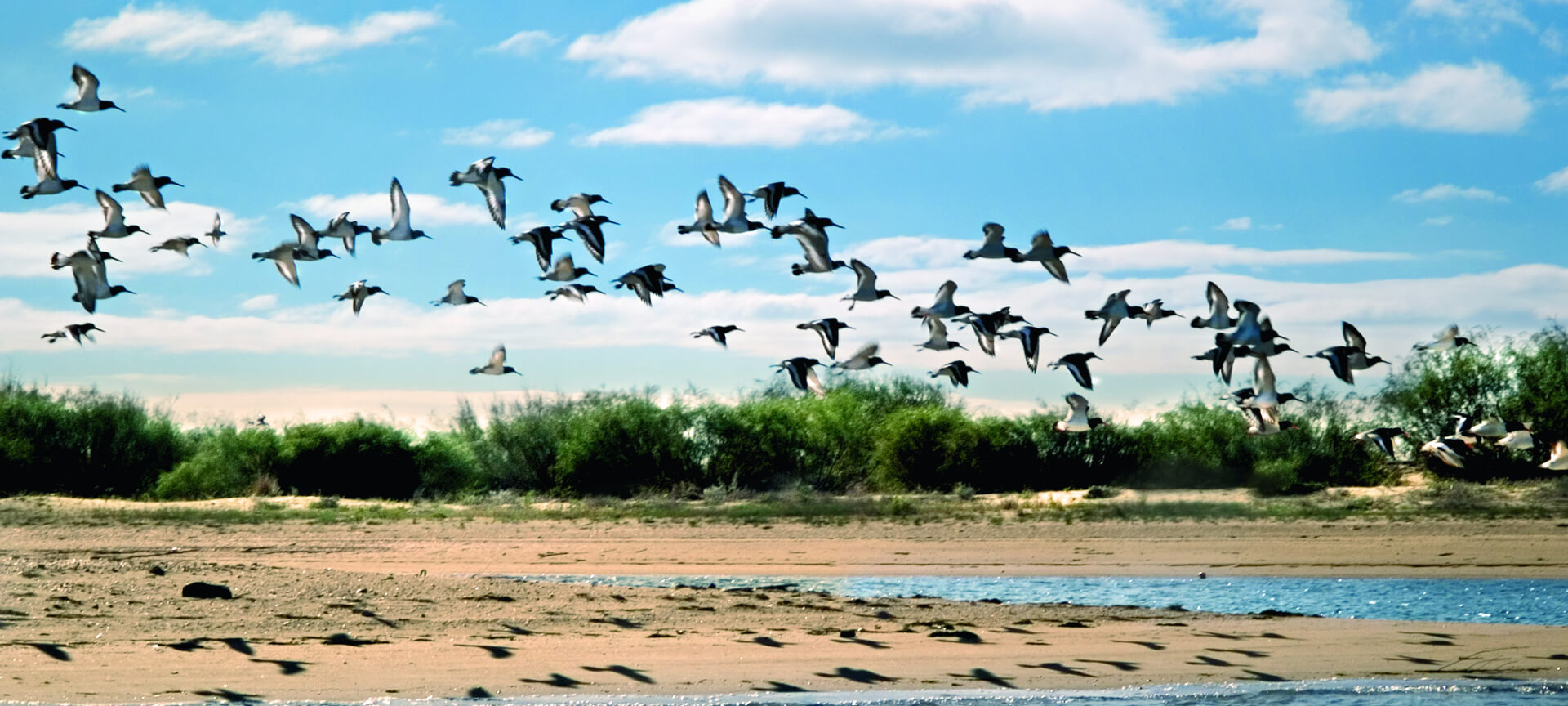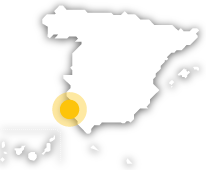
Odiel Marshes Biosphere Reserve

Between the rivers Tinto and Odiel
Between the mouths of the rivers Tinto and Odiel, in the Andalusian province of Huelva, are the marshes that make up this reserve.
Because of its great biological diversity (especially ornithological) and its beautiful landscapes, this space was declared a Biosphere Reserve by UNESCO in 1983. It is, in addition, a Special Bird Protection Area (ZEPA) and a Wetland of International Importance under the Ramsar Agreement. These marshes, which take up 7,000 ha, comprise the Nature Reserves of Marismas del Burro and Isla de Enmedio. This is one of the best-kept areas, where we observe the role played by the tides in the drainage and creation of different biotypes, such as dune bars, high marshes and middle marshes. Its geomorphologic and educational importance is enhanced by its biodiversity. The flora, which includes rushes, reeds and bulrushes, changes within metres, a diversity that creates the perfect habitat for more than 200 different bird species The rareness of some of these species (like the spoonbill and the osprey) and the numbers in which they are present in the marshes are due to the fact that Marismas del Odiel is on the migratory path for many birds. Here they find optimal conditions for nesting and breeding. In addition to the birds, we also see chameleons and lynx.
Odiel Marshes Biosphere Reserve
Huelva (Andalusia)
Huelva (Andalusia):
- Huelva
- Aljaraque
- Gibraleón
- Punta Umbría
Activa JS
What you need to know
-
Cultural information
The cities of Huelva, Moguer, Palos de la Frontera and Punta Umbría are only a step away, as is the monastery of Rábida. The beaches of Costa de la Luz, in Huelva, are also the perfect destination to complete our journey through this region.
-
Environmental information
A coastal wetland where we find numerous biotypes, such as low, middle and high marshes, inland marshes and sand bars. Each of these areas has a specific flora and collectively they constitute the ideal habitat for more than 200 bird species. This is remarkable not only because of the great variety of species present, but because of the enormous number of individuals from each one that gather in this wetland all through the year. One of the most striking of these are the flamingo colonies.
-
Information for visits
Visitor Information: This protected natural area can be accessed from the towns of Aljaraque, Gibraleón, Huelva and Punta Umbría. For further information, check out the Anastasio Sierra Visitor Centre, located in the Dique Juan Carlos I Road, km 3. 3


